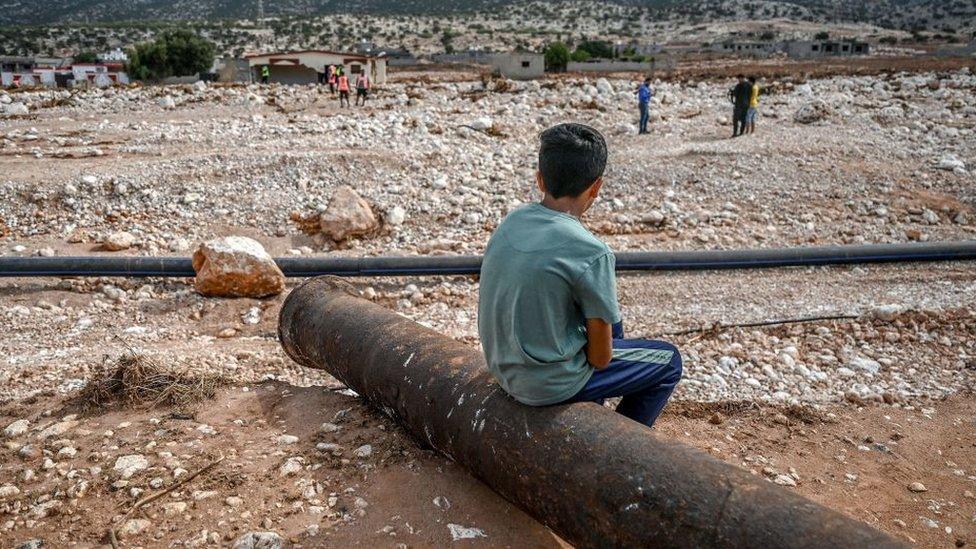Unicef report: Call for more solutions to help children affected by climate change
- Published
- comments

Millions of children around the world have been forced out of their homes because of extreme weather events.
That's according to a new report from Unicef - an organisation that works to help children around the world.
It says at least 43 million children were displaced (forced to leave their homes) between 2016 and 2021.
The report predicts 100 million more children will be forced to flee over the next 30 years and Unicef is calling for much more to be done to help children affected by climate change.
Wildfires, floods and storms are among the extreme weather events causing children to flee their homes for their safety
Experts say that climate change is causing more frequent extreme weather events around the world that have a huge impact on people's lives.
According to Unicef's 'Children Displaced in a Changing Climate' report, 95% of child displacements between 2016 and 2021 were due to floods and storms.
Droughts and wildfires also accounted for around two million displacements overall, the report says.
The decision to evacuate people from their homes is often pre-emptive, which means it happens before the natural disaster happens to save lives, but it can have a big impact on the children affected.
The report calls on governments to:
Protect children and young people from the impacts of climate change and displacement by ensuring services are in place t cope with them
Prepare children to deal with climate change by helping them learn to adapt, be resilient - and to allow them to participate in conversations about climate change
Prioritize children and young people - including those already uprooted from their homes - in action plans
Cyclone Idai: Marta's story
Unicef's Executive Director Catherine Russell said: "It is terrifying for any child when a ferocious wildfire, storm or flood barrels into their community.
"For those who are forced to flee, the fear and impact can be especially devastating, with worry of whether they will return home, resume school, or be forced to move again.
"Moving may have saved their lives, but it's also very disruptive."
Climate change explained in 90 seconds
The highest number of children displaced were recorded from countries like China and the Philippines.
Children living in small island states like Dominica and Vanuatu were more likely to be affected by storms.
Children in Somalia and South Sudan were most affected by flooding.
91热爆s and schools - like this one - can be damaged in extreme weather events
The Unicef analysis detected 1.3 million child displacements due to drought with Somalia, Ethiopia and Afghanistan by far the worst affected countries.
Meanwhile, the US accounted for three quarters (610,000 out of 810,000) of child displacements linked to wildfires.
Katherine Nightingale, from WaterAid said: "We have the tools and knowledge to respond to this escalating challenge for children, but we are acting far too slowly.
"We need to strengthen efforts to prepare communities, protect children at risk of displacement, and support those already uprooted."
- Published7 October 2023
- Published3 March 2020
- Published14 December 2022
